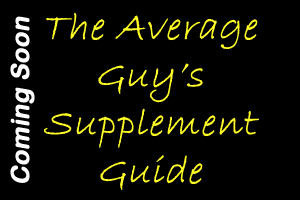The squat is often called the "king of exercises". This is because of the large group of muscles that must be activated in order to perform this movement. Most people assume that squats are just a leg exercise; but that is where they are wrong. The squat movement involves the activation of many muscles groups: the quadriceps muscles of the frontal leg, the hamstring group of the posterior leg, the gluteus muscles (maximus, medius & minimus), the whole abdominal musculature to stabilize the body, the lower and upper back also to stabilize and support. The shoulder girdle is also involved in positioning of the bar – this requires a certain amount of flexibility within the chest and shoulders.
As you can see there are many muscles called into action. The more muscle fibers recruited to perform the more calories you burn. That is why the squat is one of the best exercises you can perform both to enhance strength and increase lean muscle tissue. Squats is also one of those exercises with a multitude of variations. We can perform back squats (with bar on the back). We can perform front squats holding a bar in front across the shoulders.
We can also do dumbbell squats holding dumbbells at the sides, kettlebell squats holding kettlebells either at side or on shoulders. We can also perform suitcase squats, holding a dumbbell or kettlebell on one side only, requiring much more core stabilization to offset the weight on one side. There are also many variations of single leg squats. These are split squats, a movement similar to a lunge but stationary. We can also do Bulgarian squats which is similar to a split squat but with the rear leg up on a block, requiring much more stabilization and hip mobility. We can also do a single leg squat; the one true single leg exercise.
Squats are an extremely flexible exercise meaning that with all its variations there is rarely an individual that cannot perform a squat of some kind. Even with certain knee pathologies squats can be a safe exercise. After all, every time we sit down (whether on the couch, toilet or kitchen chair), we are performing a squat. The more we can perform this movement "correctly" in a controlled environment the stronger we will maintain our lower body and core muscles which will translate to better health and a body more able to cope with activities of life.
There are many myths surrounding squats and the safety of this exercise. Let us address a few:
#1. Squats are bad for the knees. When proper technique is learned, squats are not harmful for the knees. Strengthening the muscles and connective tissue surrounding the knee improves its stability.
#2. Squats are bad for the spine. When performed correctly the weight is borne directly over the spinal column. As with the knees, the supportive tissues around the spine are strengthened in response to the weight being lifted. Once again proper form is essential. And with all the variations listed above, back squats are not an essential lift.
#3. Squats are dangerous for the heart. Squats are not dangerous for healthy individuals with no history of hypertension or coronary disease. The heart is a muscle and will respond to the stress. If you are unaccustomed to exercise or have health concerns, you should have a physician's approval prior to embarking on any exercise program.
#4. Squats slow you down. Once again, a myth. Squats are a very explosive exercise and require power and strength. This will only benefit the individual by enhancing your own strength. #5. There are no sports or activities that require someone to move up and down with a weight on their shoulders, so why do squats? A good question, but think about our daily activities. Every time you get up and down off the couch, go to the bathroom, get up out of a chair you are doing a squat. Strengthening the muscles required to move us in our daily activities will only enhance every facet of our lives.
Squats, love em and hate em! Hard to do – yes. Require some sweat – you bet they do! Burn calories – one of the best. If you are ever stuck for a workout, the two best exercises you can do – squats and push ups.
Till next time,
Narina Prokosch
